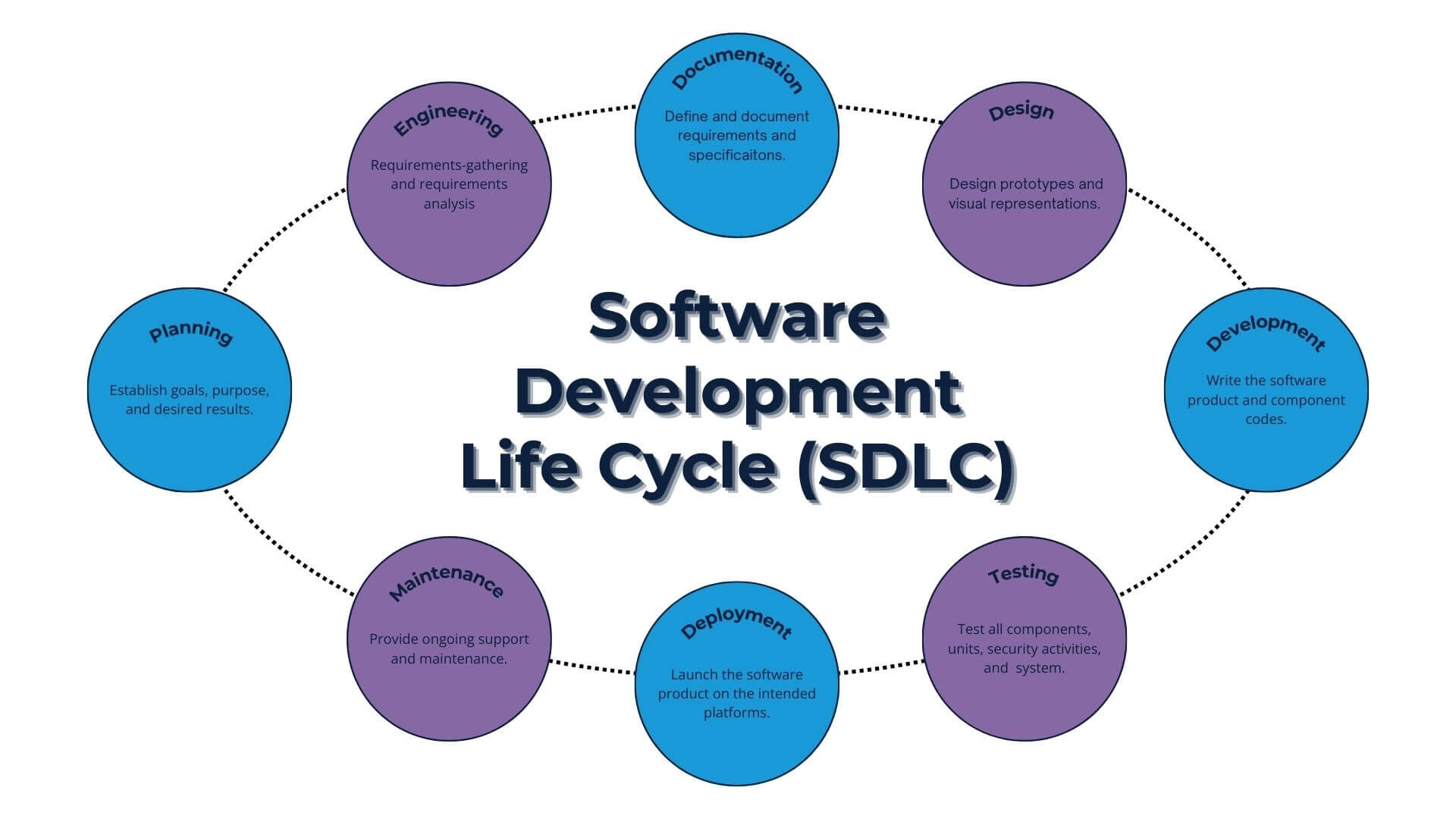An effective software development strategy can speed production while keeping quality in mind to scale your product and lead to business growth with the project’s success at the foundation.
Rest assured that your software development project will shine above the rest when using a fail-proof software development strategy with the best development methodology.
Strategic planning statistics show that 65% of companies are ineffective at introducing change through strategic initiatives. Fortunately, you aren’t introducing change to your business.
You’re initiating innovation in the world of software end users. Let’s help you plan every step of your software development to ensure you strike a trend and practice success in every download or use.
What Is a Software Development Strategy?
A software development strategy is a strategic plan devised before the software is developed by a development team, which continues to adapt and mitigate any threats throughout the software development life cycle. The goal is to help you develop and deploy a winning product in your industry.

Why Do You Need an Effective Software Development Strategy?
A well-thought-out strategy can offer the following benefits to support your software’s success in high-quality software improving customer satisfaction and meeting project requirements:
- It helps to mitigate threats early and navigate challenges during software development processes
- The plan helps to increase customer satisfaction once your software product launches
- It helps to achieve value within your product and budget while reducing costly mistakes
- Communication becomes seamless with collaboration based on the strategy
- Teams work at a greater speed led by research and objectives
- The development team and stakeholders are on the same page to solve and address issues
- The development team productivity skyrockets with a roadmap as guidance
- It enhances the security of your end product to ensure data security for yourself and your users
- The product won’t require rework once launched with a proper software development strategy
- You get to track progress in the development team throughout development
Elevate Your Strategy with Pulsion’s Expert Services
We specialise in developing software solutions, websites and app development. From hybrid, Android, and iOS apps. Here are some services you may find beneficial:
- Android app development
- AngularJS development services
- Outsourcing Software Development Services
- Cloud migration services
- Custom software development
- Hybrid app development
- Machine learning app development
- Mobile app development
- MVP development
- Python development services
- React Native app development
Partner with Pulsion to hire dedicated developers and create exceptional user experiences. Whether you need an expert Android app developer to excel in the Google Play Store or other specialised services, let our satisfied clients build your confidence with our 30 years of being in business.
Key Steps to a Successful Software Development Strategy
Highly skilled developers follow a project’s specifications to provide the timely delivery of a final product, depending on the development methodology, strategic plan, and feasibility study, which all come from the development strategy designed by project managers.
Step 1: Determine the Feasibility With a Requirements Analysis
Gathering and analysing requirements through a feasibility study can define the best project requirements to meet user needs and stakeholder satisfaction while ensuring the project will succeed. A feasibility study will determine the practicality of your intended software.
Communication is the key during this phase, which benefits all stakeholders because the feedback received can alter the planning phase. Project managers or business analysts will gather and analyse the practicality of the software requirements and prioritize the different types of specifications.
Managers will host meetings, communicate with stakeholders, and share ideas in interviews to gather the specifications for your project. They will then analyze and assess every requirement. Basically, a manager must answer these questions before a viability study is completed:
- What product are you building?
- Why are you building the product?
- What features are included in the software?
- What is the expected date of the project deadlines and milestones?
- What documentation will be necessary?
- Who will be responsible for specific tasks?
- How much money is available in the project budget?
Step 2: Start Planning
The prep stage is an essential part of your software development strategy. Planning development requires a project manager to define a complete project scope. A manager outlines every step of the project’s scope and details to correlate with the development steps, including any constraints.
The project manager outlines a specific timeline, milestones, KPIs for software development, methodologies, team members, workflow, risk management, contingency plans, resource allocation, communication strategy, and completion criteria.
The plan will guide every step while the coming steps may lead to changing requirements. Managers will then document any changes and streamline the developing processes. In reality, efficient planning is adaptable to fit the modern changes of today.
Step 3: Structure the Design Phase
The design phase occurs during development to bring new features to life and enhance quality. Designers create visually aesthetic architecture based on your requirements, which users will test and give feedback. The timeline for developing prototypes or software architecture depends on the scope.
Different steps designers could follow during this phase may include:
- Working from design documentation based on the first two steps
- The software architecture design for the structure, database, or processing
- Creating intuitive user interface (UI) and experience (UX) designs
- Defining how the software interacts and integrates with other software or hardware
Step 4: Plan Software Development
The software development process itself occurs during the software development life cycle, where developers use development tools to create the backend and frontend technologies for your software. It’s a technical phase where programming languages, frameworks, and developer tools are involved.
Here are some parts within this step of your software strategy:
- Code the software which the chosen programming codes
- Apply integration to ensure individual features work cohesively
- Follow iterations for development and testing according to the iterative models
- Use version control to track changes and manage collaboration
Step 5: Plan Automatic Implementation
Automation tools help reduce human errors and automate priorities during iteration or the Waterfall model. A trusted software development company will automate every process possible to speed up secure development. Automation can also fix defects on the go and vulnerability exposure.
A developer may use containerisation to bundle a mobile application and its dependencies or Docker registries for improvement during complex development. Developers may also use continuous integration (CI), continuous deployment (CD), automated testing, or scripted environment setup.
Step 6: Testing
The testing stage includes multiple types testers used to guarantee high-quality products. A top software development company ensures thorough testing during development, which is planned for efficiency and the continuous delivery of quality. Each crucial test also makes the software secure.
Here are some testing strategies the development team members should use:
- Integration testing – To test whether different components work together
- Performance testing – Tests the software’s stability under different workloads
- Security testing – To identify issues and vulnerabilities in your security
- System testing – To ensure the software meets the specific needs and requirements
- Unit testing – To check individual component behaviour
- User acceptance testing – To gather actual user feedback in real-world scenarios
Step 7: Delivery Plans
Delivering the final product for deployment in live environments also forms part of software development strategies once all identified issues are solved and the production team is happy with the end quality result of an app or web system. However, the initial plan also covers this stage.
The continuous delivery of high-quality assurance in software is more important than the time to market. Still, managers plan the deliverables criteria and deployment to prevent delays to businesses when developing complete software projects. Managers plan these factors:
- Release preparation with the final code, configuration, and documents
- Launch factors like using automated tools to prevent slow responses in systems
Leading companies with long-running expertise use blue or green deployments or canary releases to test software in live environments before finally launching the product.
Step 8: Maintenance Plans
Teams with outstanding expertise and work ethics efficiently maintain software, which is planned for the software development strategy, including:
- Regular updates to the code
- Address bug fixes promptly
- Continuous performance optimisation
- Continuous security enhancements
- Ongoing support for users
7 Tips to Help You Design an Effective Software Development Strategy
A development strategy should have productivity through the roof. However, you can do a few more things to gain a competitive advantage with your software development strategy.
- Define Your Project’s Objectives and Requirements
Project requirements make or break success. Know what you want to achieve with software before planning application development for teams. Gathering the specifications will help you conduct a requirements analysis for software development, which outlines the strategy and possible methods.
- Identify Stakeholders and End User Needs
Stakeholders include anyone influenced by the intended product. Identify your stakeholders to adopt the right requirements to suit your investment. Expectations and critical outcomes range among stakeholders, end users, and customers. Learn how to create a software requirements document.
- Assess Your Resources
Understanding your resources may help guide managers in preparing an effective strategic plan. Resources go beyond your budget. Assess what team you have available, and the knowledge of your developers as you may consider outsourcing IT services to trusted outsourcing companies in the UK.
- Prioritise Security
Security should always be a priority when preparing a software development strategy. In one instance, you may invest in the idea of automated testing, or you could rely on quality testing through different iterations. Align your security standards and needs with your strategies. Software testing is important.
- Analyse Potential Risks
Of course, analysing risks helps you mitigate them. Identify risks like changing market trends, software development trends, legal regulations, or external factors that may impact your software before proposing a development strategy or method. Businesses must assess potentially influential aspects.
- Apply a Mitigation Strategic Plan
Risk mitigation is instrumental to software development strategies for several reasons. Focusing on mitigation strategies efficiently creates a seamless digital mission that won’t cost more than it’s worth. The benefit of mitigation strategy execution is to have measurable and viable action plans for risks.
- Understand the Best Development Methodology for Your Business Goals
Various methodologies exist, but choosing the best development methodology will pivot the project’s success. Perhaps you prefer a traditional method or want to explore and engage with a new method. Let’s shed light on methodology knowledge to support whatever direction you need or wish to prioritize.
Agile Software Development Methodology
The Agile software development strategy is good for speed and efficiency. The Agile approach uses iterations to build and launch software in sprints to ensure it will meet clients’ needs. Developers schedule shorter delivery times and release batches every few weeks.
Commonly, you’d incorporate Agile development strategies using a software development process to overcome time constraints as the deliverables and timelines differ. Agile is ideal for time-bound projects. Additionally, the mentioned approach follows defined elements to deliver software free from bugs.
The Rapid Application Development Process (RAD)
Our customers also have the option to develop software with the rapid application development process. RAD prioritises rapid application development practices with iterative stages and prototype releases to gather user feedback for improvement on the next release.
Also, RAD is focused on component reuse after hosting workshops and focus groups to refine requirements. RAD projects create fast-released software on the market. It requires close collaboration with software development teams, allowing teams to implement new tools and technology for changes.
Waterfall Methodology in Software Development
A well-thought-out software plan for a business could also use the Waterfall method, which is linear and sequential. The plan includes a thorough analysis and documentation stage before any development commences, including which technology to use and what essential features to add.
The method sees developers complete each stage before moving to the next. The stages of application development include analysis, design, implementation, verification, and maintenance. The team must have a clear picture to follow the practices, complete the tasks, and progress operations.
Choose Pulsion to Design an Effective Software Development Strategy
Learn more about us or our clients to understand how much we strive to deliver only the best software, which starts with a software strategy. Our cross-functional teams strive for success in custom software, from custom software development to custom mobile app development.
Read our case studies, or talk to our digital strategy consultants with expertise in strategic plans.
Improving user satisfaction, following seamless tasks, and using Agile methods are some of our cross-functional team benefits. We prefer Agile methodologies above most because they deliver faster and higher-quality software. Contact us today for free to review your idea.
Summing Up Effective Software Development Strategies
Your software development project deserves only the best way or road to success. Progress toward effective operations, having the best tool online, or creating easier tasks begin with a strategy. Software strategies provide flow for multiple departments and let clients interact easily with the team.
A strategy enables you to review the infrastructure and be careful about deciding on hardware or software-based changes. Arise with the best market software by outsourcing to a development team that understands your needs and values your schedule. Contact us today to learn more.
Effective Software Development Strategy FAQs
What Is a Software Development Strategy Example?
Examples of a software development strategy include the analysis, design, and preparation phases. We incorporate all relevant phases to ensure excellent feature functionality, cost-benefit, and a well-defined blueprint for your software strategy. Lastly, we monitor and make adjustments as it begins to proceed.
What Are the 8 Steps of a Software Development Strategy?
The 8 key steps to effective software development strategies are:
- Determine project, skills, and functionality feasibility
- Prepare everything to happen in the following steps based on the approach (methodologies)
- Outline the design phases and prototyping protocols
- Proceed to prepare for software development that aligns with the documents
- Make adjustments to implement the relevant automated programs
- Break into the testing phase details with types
- Account for the deployment strategy with deliverables
- Fill in the details of how teams maintain the software
What Are the Key Elements of Strategic Proposals?
Strategic plans require six key elements to build the best software without waste or divided user experiences. The elements to build successful software with a strategy in mind include:
- Considering the business vision
- Understanding the business mission
- Identifying the business goal or objective
- Outlining the long-term method to achieve the objectives
- Choosing the methodologies to guide the long-term scheme or outcomes
- Writing the smaller tasks as related to the method and plan






